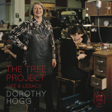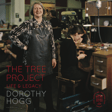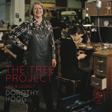
The Tree Project: Lorna Watson & Lynne Craig
Lorna Watson is the founder of STELAR, a purpose-led brand focussed on the principles of community, craftsmanship, transparency and regeneration. Born and established in Bali, STELAR collaborates with local artisan communities to create luxury handcrafted bags and accessories that preserve high-level heritage weaving skills. Their mission is to build a modern luxury brand, that continues to set new industry standards of traceability by bringing value to the people and skills behind each item they create, not only the item itself.
Lynne Craig’s practice connects design, technology, education, and business development; exploring the frontiers of emergent technologies and cultural change. Throughout her career she has built businesses, created products, designed systems for global audiences, and continues to reimagine what the role of ‘making’ in design, education and business looks like for tomorrow. She has recently been interviewed for the New York Times, exploring futures in jewellery, and has created celebrated immersive retail experiences globally for premium international brands across fashion, beauty and luxury sectors, including De Beers, Louis Vuitton, Uniqlo and Dunhill.
During her time as Head of Jewellery & Silversmithing at Edinburgh College of Art, renowned jeweller and educator Dorothy Hogg MBE inspired students in the workshop and beyond. For more information on Dorothy Hogg, the project and participants, visit: www.scottishgoldsmithstrust.org/tree-project.
Hosted by Ebba Goring
Edited & Produced by Eda Obermanns
Cover Image by Shannon Tofts
Music: Precious Memories by Shane Ivers - https://www.silvermansound.com


